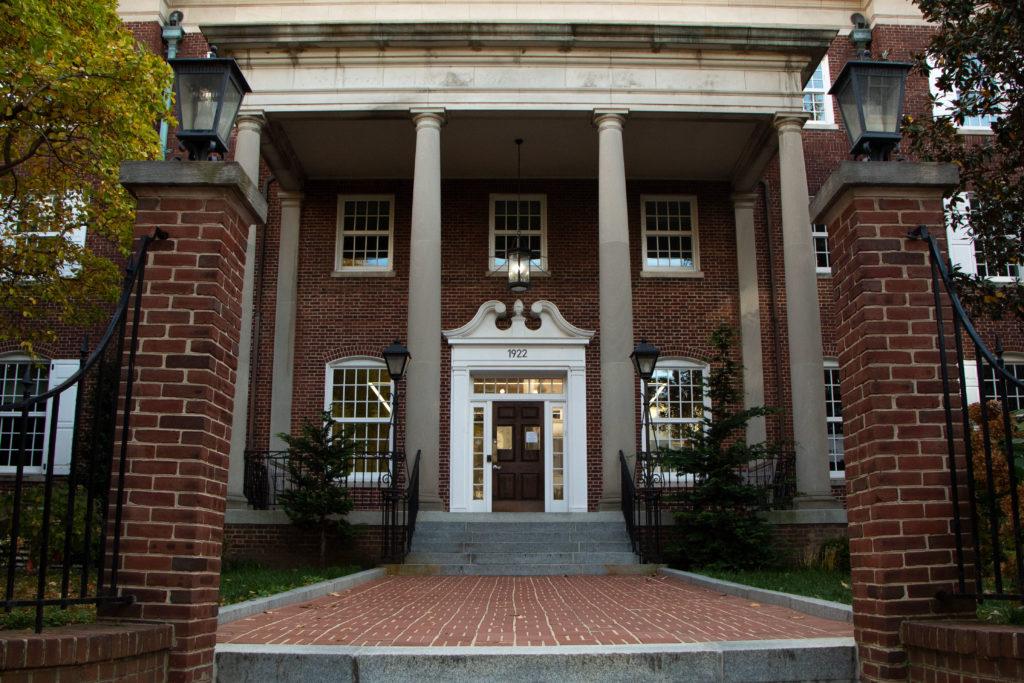Behind several recent University initiatives are task forces commissioned by the Board of Trustees to provide the body with information ahead of major decisions.
Board of Trustees Chair Grace Speights said the board’s task forces and strategic committees, which are composed of trustees and “community constituents,” evaluate specific issues for a period of time based on the University’s needs. The groups, which have been commissioned to examine areas like enrollment and volunteer engagement, are created and maintained separately from the board’s five standing committees.
“These issues are narrowly focused and allow the board to engage deeply for a finite period,” Speights said in an email.
Here’s how the board’s task forces and strategic committees have shaped some of the University’s top initiatives over the past few years:
Student experience
Trustees created a student experience task force in September 2017 to address student concerns about campus life and affordability. Members of the task force presented guidelines, like improvements to health and safety resources, greater affordability and additional community space to trustees in May 2018.
Trustees have since approved $10 million in funding for campus safety improvements, and administrators have expanded the Colonial Health Center’s hours and locations.
Officials also reduced laundry and printing costs, eliminated fees for students renting on-campus spaces and recently launched a new partnership to offer discounted meals at some food trucks.
“The Student Experience Task Force was developed to review the program and service offerings at GW and to develop recommendations for improvement,” Speights said.
Risa Lieberwitz, a professor of labor and employment law at Cornell University, said the main principle guiding any board task force should be shared governance, or including student leaders and faculty in improving the student experience because they are “central” to the initiative.
Former Student Association President Peak Sen Chua and former SA Executive Vice President Sydney Nelson served on the board’s task force.
“I think it’s incumbent on the Board of Trustees to be sensitive that the Board of Trustees should not interfere in the shared governance process in a way that undermines the institutional role of the Faculty Senate and other governance bodies that exist,” Lieberwitz said.
Volunteer engagement
The board created a volunteer engagement task force in September 2017 following the completion of the University’s $1 billion fundraising campaign.
“The Volunteer Engagement Task Force was established to evaluate the volunteer engagement pipeline at GW for alumni and others interested in serving the University,” Speights said.
The task force split into five subcommittees to further break down and examine the issue’s parts, like the student-alumni volunteer pipeline and the volunteer experience.
GW’s alumni volunteer base hit the second-lowest level in a decade in fiscal year 2019, and the University experienced the lowest alumni giving rate compared to its peer institutions during the 2017 and 2018 academic years.
University President Thomas LeBlanc has met with alumni in cities across the country and in London since he arrived at GW, and he plans to make stops in 11 more cities this academic year.
Officials introduced a new alumni association in May to connect alumni with the University after the former association split from GW following a failed merger.
Speights said both the volunteer engagement and student experience task forces “successfully” completed their tasks after they submitted recommendations to the board.
“As both task forces represent areas of focus for the University’s strategic initiatives, the board continues to monitor progress closely,” Speights said.
Strategic enrollment
Trustees created a strategic committee on enrollment during summer 2018 to examine nationwide enrollment trends.
“The Committee on Strategic Enrollment is responsible for establishing overarching strategic enrollment priorities that support the educational and research mission of the University,” according to the group’s mission statement, which was approved in October.
Officials announced in July that they plan to reduce the undergraduate enrollment population by nearly 20 percent over five years, which experts said could boost GW’s rankings but decrease revenue. Undergraduate enrollment fell this academic year for the first time in six years, which administrators said was the first step in the planned enrollment drop.
LeBlanc also plans to enroll more STEM students by increasing the proportion of STEM majors from about 19 percent to 30 percent.
“We should all want every student at this University to have access to the skills necessary for the quantitative analysis of data using technology,” LeBlanc said at a town hall meeting in September. “These skills are transforming every discipline and even the nature of work.”
Strategic planning
The board established a strategic planning task force in September to oversee the creation of GW’s next strategic plan. To guide the plan, LeBlanc developed four pillars – faculty, graduate and undergraduate education and research – with corresponding committees, each of which has held at least one community forum to gather input from community members.
Trustees will hold the final vote on the strategic plan at their annual summer retreat in June, weeks later than originally scheduled at the board’s May meeting. The move follows weeks of faculty concerns about the timeline for the plan’s approval.
Lynn Pasquerella, the president of the Association of American Colleges and Universities, said a strategic planning task force is “quite common” at many universities and helps clarify the vision of an institution that frames its goals.
She said an effective strategic planning task force should include stakeholders outside the board to include different perspectives. GW’s task force is composed of trustees, students, faculty, staff and alumni.
“They can best represent the University by ensuring that there is a diversity of voices that are brought into the process of planning – to ensure that faculty, staff and in many cases, community members, have a voice in the process of shaping the future of the institution,” Pasquerella said.
Ilena Peng contributed reporting.





